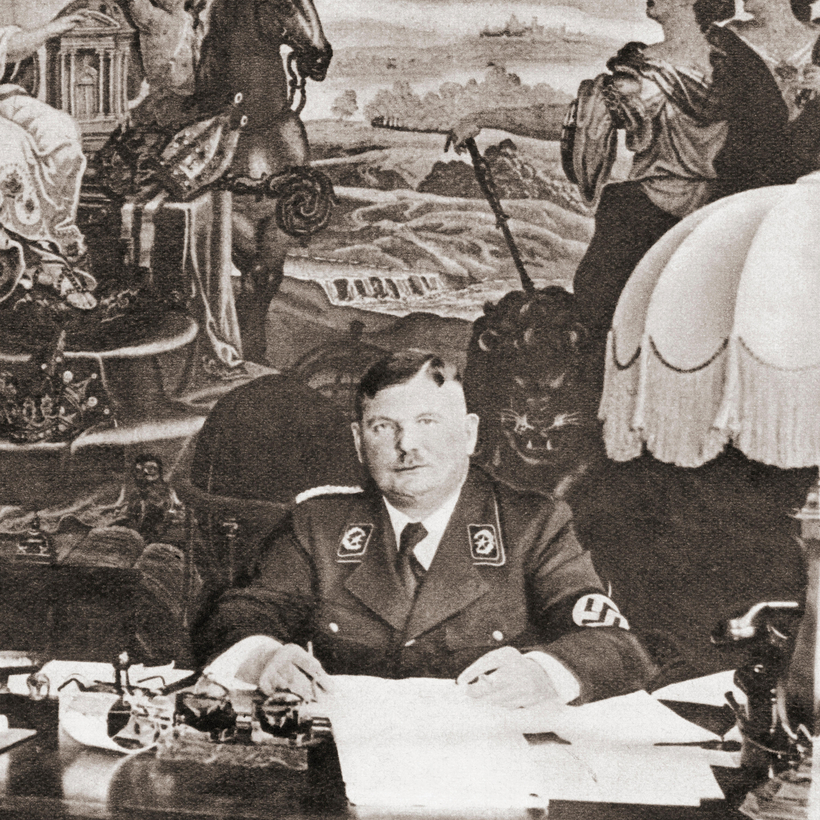Anyone who has seen Bryan Singer’s Valkyrie (2008)—the tale of the July 1944 plot to assassinate Hitler—will have been struck by the contrast between the conspirators and those against whom they are conspiring. There is would-be assassin Colonel Claus von Stauffenberg, a paragon of medieval chivalry, played by Tom Cruise; Major General Henning von Tresckow (Kenneth Branagh), principled, courageous, and suave; General Friedrich Olbricht (Bill Nighy), sensitive and polite; and General Ludwig Beck (Terence Stamp), courteous and dignified. Ranged against them is a pip-squeak colonel, a Cockney-accented Field Marshal Keitel, and a Dr. Goebbels who looks like the Child Catcher from Chitty Chitty Bang Bang. The point the film is making is not simply that the conspirators are the “goodies” and the Nazis the “baddies” but that the plotters were patricians and the Nazis plebs.
As far as this celebrated instance goes, there is little to quarrel with. Many of the most significant of the July plotters were members of the old German nobility. But it would be a major error to extrapolate this fact and assume that the German aristocracy was intrinsically opposed to National Socialism. On the contrary, as Stephan Malinowski, a professor at the University of Edinburgh and an expert on the subject, shows in his meticulously researched book, the majority of the German nobility were enthusiastic supporters of Hitler’s regime and played a key role in its establishment.

In many ways, the German aristocracy and the Nazis were unlikely bedfellows. The National Socialist German Workers’ Party (NSDAP, or Nazi, for short) was the bitter opponent not merely of communists and social democrats but also of monarchists and reactionaries. Goebbels promised a “ruthless fight” against those aristocrats who dismissed the German people as a “stinking mass,” and during the purge of Nazi opponents in the summer of 1934—the so-called Night of the Long Knives—a number of prominent aristocrats and generals were murdered by the regime.
On the flip side, the aristocracy was preconditioned to despise mass movements (especially violent ones), feared the Nazis’ attitude toward private property, and looked down their noses at the “Bohemian corporal” strutting about with his Charlie Chaplin mustache.
How, then, did this misalliance occur?
The July 1944 plotters were patricians and the Nazis plebs.
The answer, provided by Malinowski, stems from the precipitous collapse of the Second German Empire. In the space of a few days, in the autumn of 1918, revolution broke out across Germany, the kaiser abdicated (along with Germany’s 22 other monarchs), and a republic was declared. Hot on the heels of these events—which destroyed the sociopolitical system under which the German aristocracy had prospered for hundreds of years—came the reduction in the German officer corps (a traditional source of employment for younger sons and the minor nobility) to a mere 4,000 men and clauses in the new German constitution which abolished entailed estates as well as all privileges conveyed by “birth or social status.”
The aristocracy had suffered a sudden, significant decline and was on the lookout for ways in which both it and its ideals—nationalism, imperialism, militarism, and patriotism—could be revived. The Nazis appeared to offer a means toward this goal while a commonality of enemies—the Weimar Republic, modernism, democracy, capitalism, parliamentarism, liberalism, socialism, Bolshevism, and Judaism—served only to bring the two groups closer together. As Malinowski shows, the German nobility had become increasingly anti-Semitic, independent of the NSDAP, in the years following the First World War, and the leap between the expulsion of Jews from noble clubs and associations and the persecution of an entire section of society was not that great.

Of course, no one class acts or thinks in a uniform way, and Malinowski draws out the exceptions as well as the subtleties. The southern, Catholic aristocracy showed considerably less willingness to embrace National Socialism than did their Protestant Prussian contemporaries, for instance. Not all nobles were Nazis, just as hardly any of the highly memorialized July 20 conspirators were democrats. “We want a New Order that makes all Germans supporters of the state and guarantees them law and justice, but we scorn the lie of equality and bow before the hierarchies established by nature,” declared the manifesto written by Stauffenberg and his brother two weeks before their attempt on Hitler’s life.
This book, then, is a serious work of academic scholarship, with all of the advantages and disadvantages that one would expect. While it is short on anecdotes, it is long on extremely long German names. If aristocratic German genealogy is your bag, then you are in luck. If not, then the profusion of Hohenzollerns, Hessens, Helldorfs, and Houwalds—to take only the most prominent H’s—may prove overwhelming.
Either way, this is a timely book. The collaboration between the German nobility and the Nazis may be among the most notorious misalliances in history, but it was not the last. In both the United States and in Britain, “conservatives” who used to extol probity and pragmatism have, over the last four years, put their considerable support behind persons and projects that represent the antithesis of these virtues. They may have benefited personally. They may have believed in it ideologically. But the damage has been immense, and they too will be judged by history.
Tim Bouverie is the author of Appeasement: Chamberlain, Hitler, Churchill, and the Road to War


